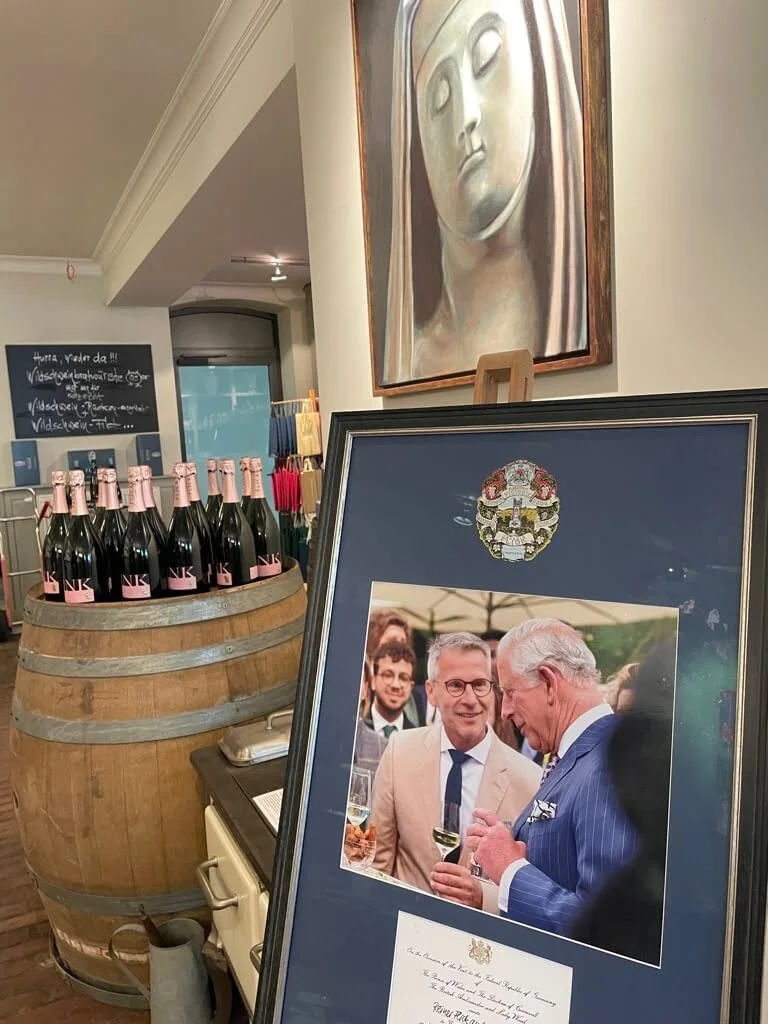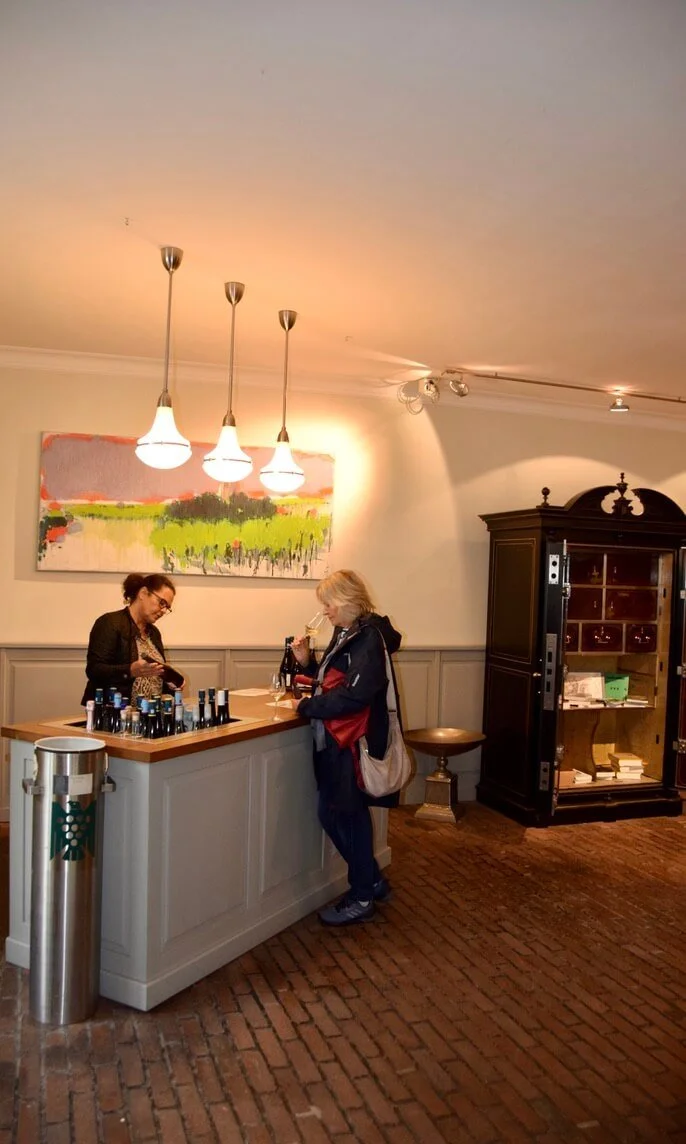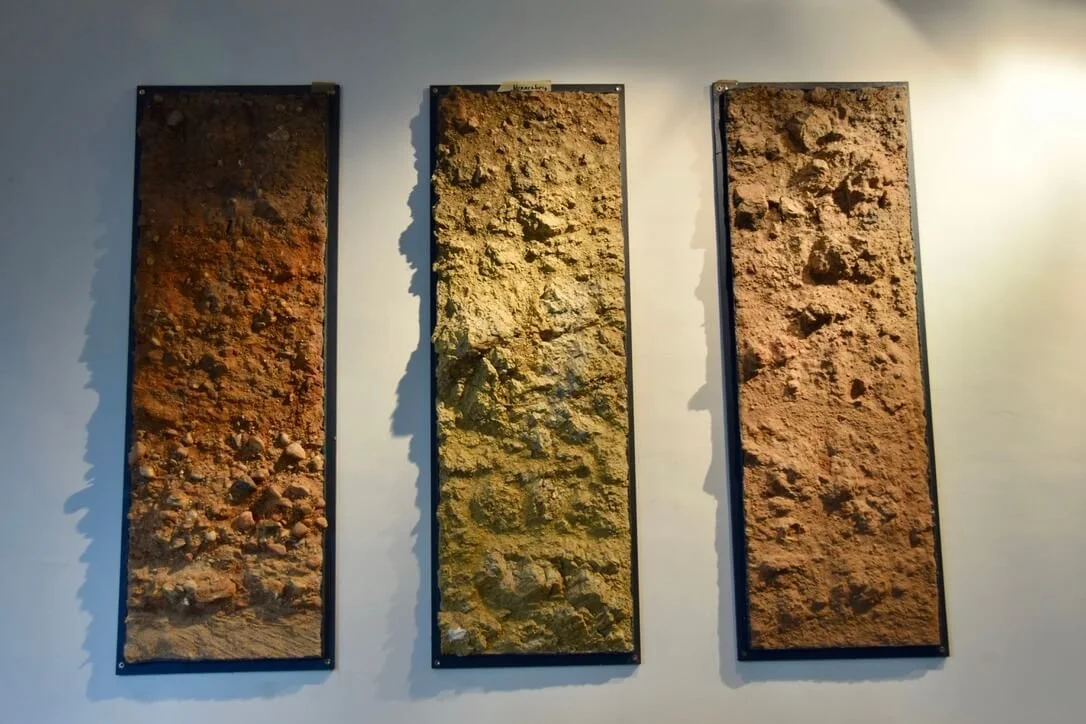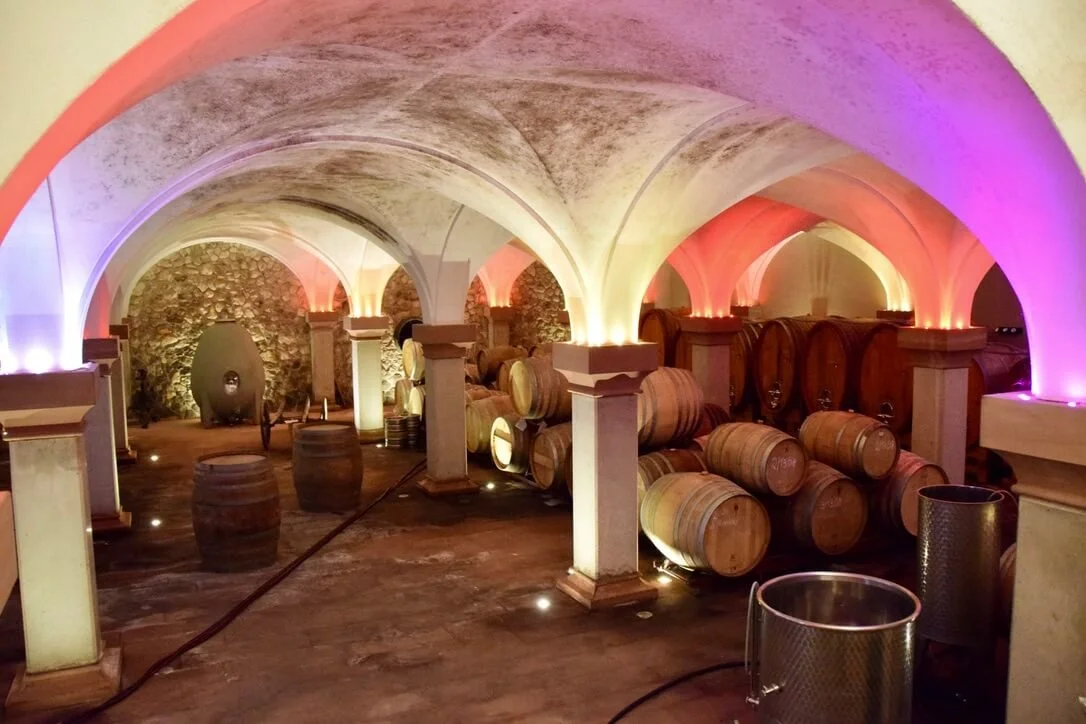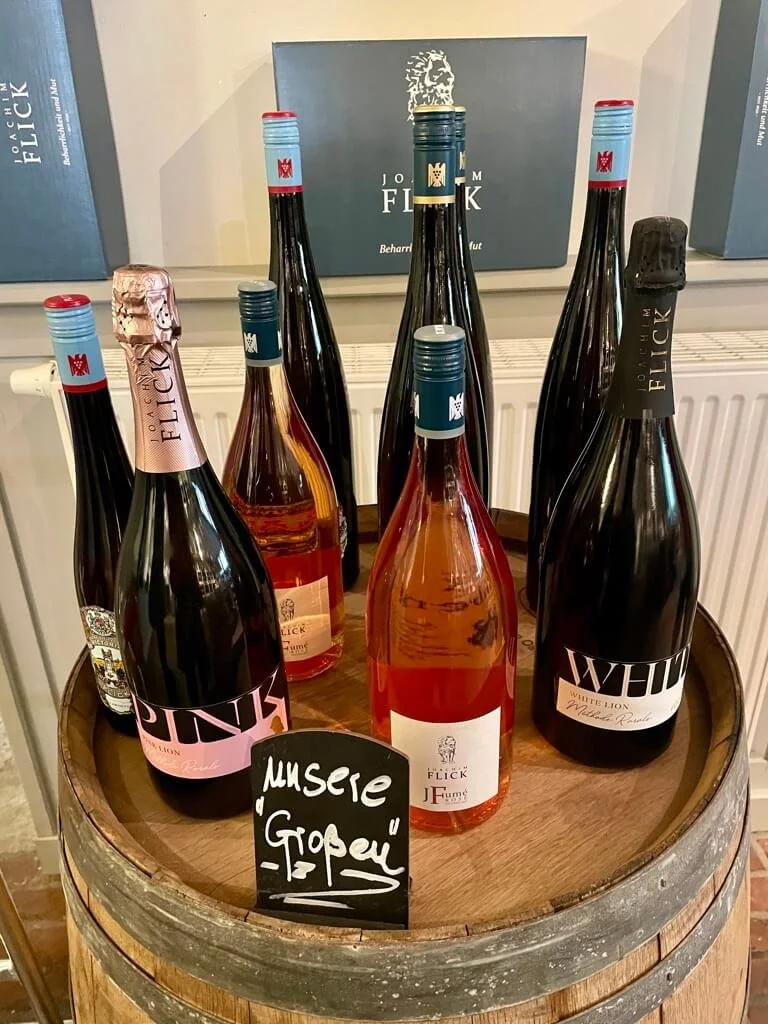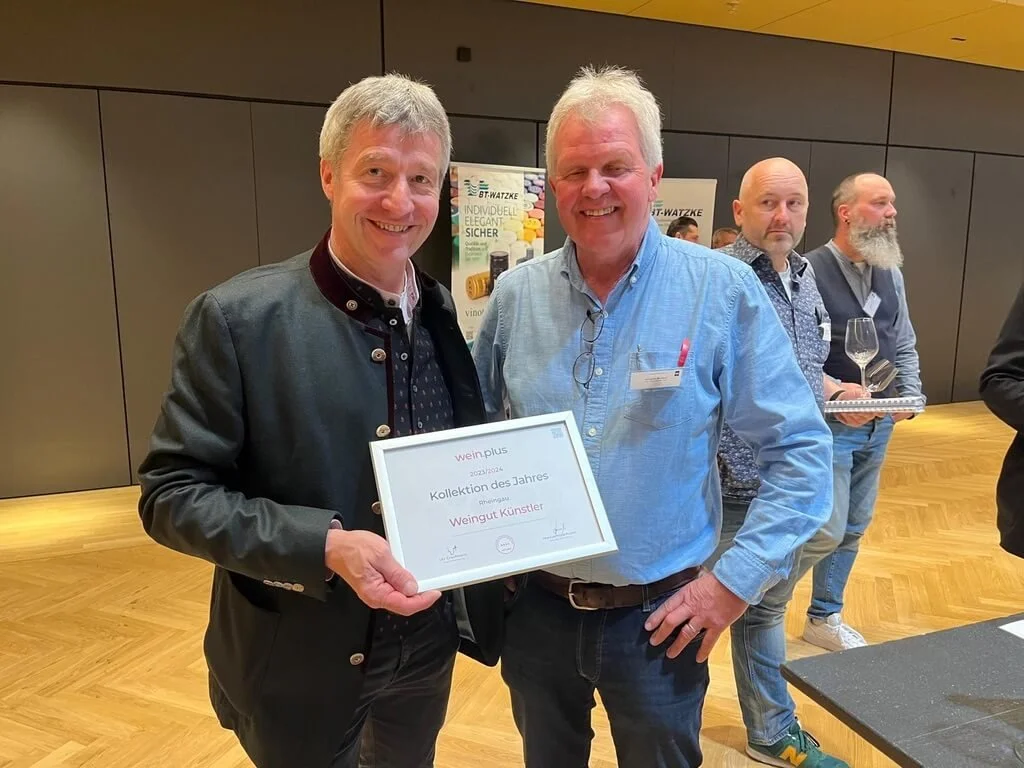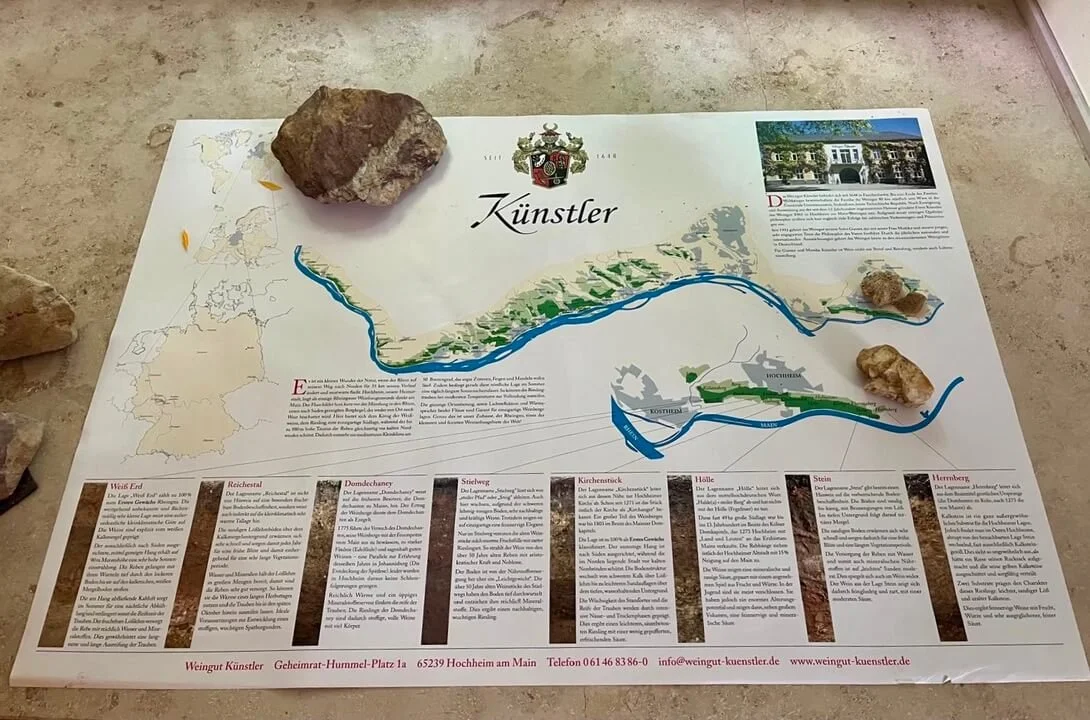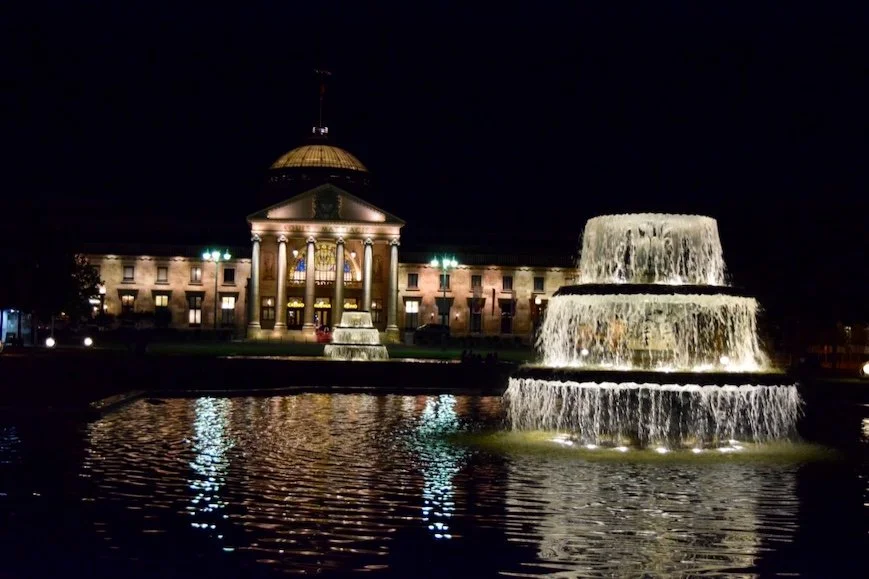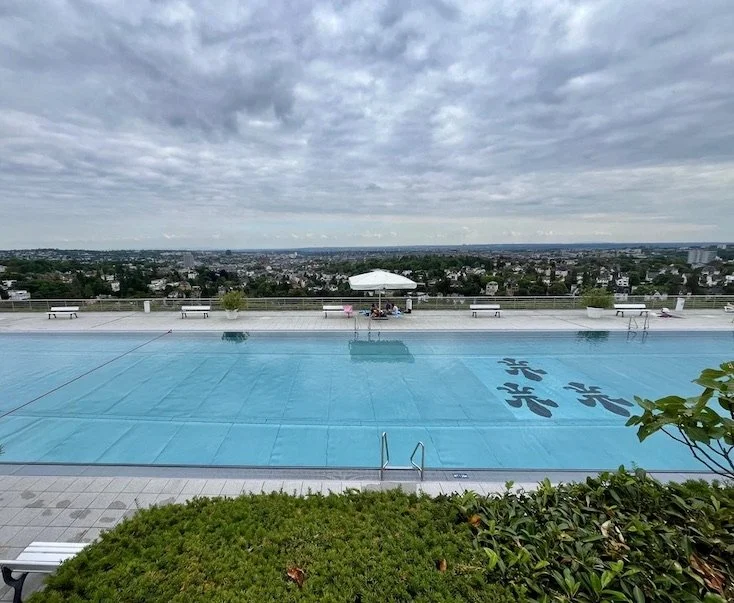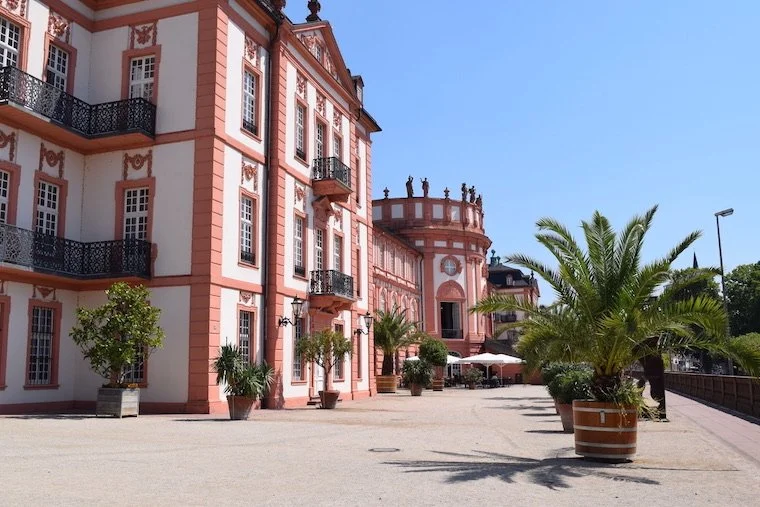Exploring Hochheim and the eastern Rheingau wine region
We discover the Rheingau wines at the eastern gateway to the Rheingau wine region, around the wine village of Hochheim am Main
Hochheim am Main - Source: Winekeller
The greater part of the historic Rheingau, one of the most famous wine regions in Germany, stretches out along the right bank of the River Rhine, from the city of Wiesbaden, travelling west, before the river moves north at the wine village of Assmannshausen. Also included in the Rheingau wine region however are the vineyards around Hochheim am Main, on the Main River, a tributary of the Rhine and just east of Wiesbaden.
This part of Rheingau Germany is flatter and perhaps less scenic than central Rheingau, however it produces some superb wines and has famous connections to the history of Rhine wines and German wines in general.
Here we explore Hochheim am Main and visit two of its top wineries, Weingut Joachim Flick and Weingut Künstler.
The eastern Rheingau wine region
Rheingau map
The world-famous Rheingau wine region starts just east of Wiesbaden - a beautiful city known as the gateway to the Rheingau - with some 200 hectares of vineyards spread out around the wine village of Hochheim am Main and along the River Main. This makes it the closest wine region to the city of Frankfurt, which is ideal for those travelling into Frankfurt international airport or perhaps staying in the city for business and who wish to travel into the Rheingau vineyards.
The vineyards lie on gently sloping land just north of the warming River Main, with deep soils and a warm micro-climate. The soils in this part of Rheingau are slightly different to those in the central Rheingau and the western end and the landscape is much flatter. Significantly, the soils are more sandy here, compared to the slate and mineral soils of the rest of the Rheingau wine region. This of course impacts the wines produced here, which tend to be a bit smoother, rounder and with a little less acidity. The soils can produce rich wines with lots of full-bodied earthiness.
Hochheim however has an important claim to fame - that is being the origin of the word ‘hock’.
What is German ‘hock’ wine?
The term ‘hock wine’ was adopted by the British in the 17th century for the high-quality, prestigious German Rhine wines, derived from the name of the town Hochheim. The term ‘hock’ was then used more broadly in the 18th century to include any German white wine sold in Britain, aided in no small part by the visit to Hochheim in 1845 by Queen Victoria and her subsequent endorsement of the prestige of the fruity, white wines produced here (see later).
Today the term ‘hock’, although less used than it was, applies to easy-drinking, lower priced, more mass produced German wine, which is medium sweet, fruity and tends to be made from a blend of grapes such as Müller-Thurgau, Riesling, Kerner, and Silvaner.
The term ‘hock’ is therefore not equated today with the ‘prestige’ nature of the wines produced in the German Rhine region in the 17th and 18th centuries, however some seriously good wines are indeed being produced today around Hochheim am Main - but they are not referred to as ‘hock’.
Here we discover some of these superb Hochheim wines, with visits to top Rheingau wineries, Weingut Joachim Flick and Weingut Künstler.
Our visit to Weingut Joachim Flick Flörsheim
World-famous Königin Victoriaberg wines from Weingut Joachim Flick - Source: Winekeller
The historic winery, Weingut Joachim Flick, is located in the small village of Flörsheim-Wicker, just outside Hochheim am Main, the gateway to Germany’s Rheingau wine region.
The estate’s history goes back to 1318, when it was first documented as a mill built by the Counts of Eppstein. Today, the historic ‘Strassenmühle’ provides the base for the Joachim Flick winery and it’s an idyllic, rural location, with its country garden, meadow orchard and beautiful courtyard lined with old stone walls. (Unfortunately it was pouring with rain when we visited but nonetheless we could appreciate its rural charm and long history.) The ‘Strassenmühle’ also provides a great venue for the many events and celebrations which are held here each year.
The Flick family also has a long history as winemakers in the village of Wicker, involving nine family generations since 1650. Joachim Flick formed the full-time business in 1973 and then in 1992 Reiner Flick took over the winery and worked to expand the estate to its current size.
Today the family farms some 20 hectares of vineyards, extending from Wicker through Hochheim to Lorch and primarily planted with Riesling and Pinot Noir, with some Pinot Gris, Pinot Blanc, Chardonnay, and Sauvignon Blanc.
Weingut Joachim Flick produces a range of wines, from ‘Grand Cru’/’Grosses Gewächs’ dry wines to ‘noble sweet’, premium Spätlese and Trockenbeerenauslese wines, classified single vineyard wines and a range of village (Wickerer and Lorcher wines) and regional wines.
Weingut Joachim Flick monopole vineyard sites
Weingut Joachim Flick is most known however for its two prized monopole vineyard sites, two of the most famous of all Rheingau vineyards:
Hochheim Königin Victoriaberg (Queen Victoriaberg) vineyard
We referenced earlier a visit to Hochheim in 1845 by Queen Victoria. The Queen and Prince Albert were invited to the ‘best vineyard’ in the area for a wine tasting and loving the wines, the Queen agreed to give her name to the five acre vineyard and it became the Königin Victoriaberg vineyard.
On the Queen’s birthday in 1854 a monument was unveiled in her honour in the middle of the vineyard. You can visit this monument today, on foot or by bike. The neo-gothic style crest of the Queen of England has decorated each bottle of wine since then and it continues to do so. The late Queen Elizabeth II also visited this famous, historic vineyard, along with Prince William and his wife Catherine and wines from the Hochheim Königin Victoriaberg are still sent to the Royal Family today.
Weingut Joachim Flick is rightly most proud of this prestigious vineyard and today it produces superb Grand Cru (GG) and single vineyard wines.
Wicker Nonnberg vineyard
The famous, historic Nonnberg vineyard in Wicker was first documented back in 1281 - as the ‘Nonnenberg’ (nun’s hill) and it was recorded in 1791 as being ‘a vineyard of five acres in the best site..’. Owned for a long time by the chapter of the Mainz Dom (Cathedral), the vineyard was purchased in 1807 by a tradesman from Mainz and has been exclusively owned by Weingut Joachim Flick since 2003.
The chalky soil of this prized and classified vineyard site produces exceptional wines with superb minerality and long ageing potential.
You can visit the Weingut Joachim Flick vinothek (wine shop), housed in the former carriage house of the Strassenmühle and can also pre-book a wine-tasting.
See here for contact details.
Our visit to Weingut Künstler Hochheim
Weingut Künstler is a top German VDP wine estate, located in the centre of Hochheim, founded in 1965 by Franz Künstler. Today the estate is managed by Monika and Gunter Künstler, who follow more than 370 years of family winemaking tradition to produce what is regarded as some of the best Rheingau wines.
Weingut Künstler is well-known for its eight VDP Grosse Lage - or Grand Cru - vineyards, including the two largest sites, Hölle and Reichestal. This Rheingau winery enjoys an excellent reputation for its wines, especially Rheingau Riesling and Pinot Noir but also Chardonnay, Sauvignon Blanc, Grüner Veltliner and Alvarinho wines.
For example, the Künstler 2023 HÖLLE Riesling GG wine was awarded 100 points from James Suckling and the number 2 place in the list of 100 Best wines in the World. Gunter Künstler was also presented with an award at the 2024 annual VDP wine tasting event in Mainz for 'wine collection of the year'.
Weingut Künstler and les Deux Dienstbach restaurant, Hochheim - Source: Winekeller
Almost 80% of the 50 hectares of vineyards are represented by Riesling vines, but if you enjoy Pinot Noir, this is a good winery to visit to sample some excellent German ‘Spätburgunder’.
You can enjoy a tour of the Hochheim winery and a wine tasting in Weingut Künstler’s vinothek all year round, including white, red and sparkling wines.
Les Deux Dienstbach restaurant
Weingut Künstler also runs an excellent restaurant Les Deux Dienstbach, right next to the winery. It’s only open in the evenings but has an excellent reputation for its fine dining with a French twist, using local fresh ingredients.
Note that Weingut Künstler also owns a wine bar/restaurant in Hattenheim, called Chamamé in the middle Rheingau, specialising in Argentinian and Mediterranean cuisine.
Explore Hochheim am Main
It’s worth spending some time walking around Hochheim and through its famous vineyards.
As noted earlier a recommended vineyard walk is to see the Königin Victoriaberg monument, which is also featured in the popular Riesling loop walking trail ‘Wine and Victoria’.
Hochheim has been producing wine for 1,200 years and has also made a name for itself as a sparkling wine town. It gained particular recognition through the visit of Queen Victoria of course, but it is also popular today for its charming historic centre, with its many lovingly-restored, half-timboured houses. Stroll around the small streets of the historic centre, laid out in a ring-shape from the elevated position of the landmark church - the catholic church of St. Peter and Paul. This is also worth seeing, dating back to 1730 and the only late Baroque Fresco church in Hesse.
Hochheim was also visited in April 1788 by Thomas Jefferson, the third President of the USA between 1801 and 1809. He was so taken with Hochheim wines that he purchased some vines and took them back to his home at the time in Paris and then back to the USA, so he could produce his own ‘Hochheimer’ wines there.
The beautiful Baroque church in Hochheim - Source: Winekeller
Visit Wiesbaden
The city of Wiesbaden is the elegant state capital of Hesse, known for its thermal springs, its beautiful buildings and villas, its thriving cultural scene and of course Rheingau wines!
Wiesbaden to Frankfurt is just 30 minutes by road or rail and serves as the ideal base from which to explore Germany’s Rheingau region.
Things to do in Wiesbaden
Wiesbaden became famous in the 19th century as an international, exclusive spa resort and today 14 of its original thermal hot springs remain. The Kaiser-Friedrich-Therme in the centre of the city is a must visit if you love spas. Built on the site of ancient Roman baths, there is a wide range of steam and sauna options and it offers the ultimate spa experience. You can also see the remains of the Roman city wall next to the Roman baths.
In the Summer visit Wiesbaden Opelbad - a fabulous open air pool looking down over the city - where you can also enjoy a sauna.
Wiesbaden meaning
Wiesbaden was famous as a spa resort much further back than the 19th century, with a document from the year 828 mentioning the town of "Wisibada," the ‘bath in the meadows’, where Charlemagne supposedly cured his rheumatism in the thermal springs.
A major landmark in Wiesbaden, known for its stunning architecture, is the beautiful Kurhaus - opened in 1907 and once a popular meeting place for the elite of Germany and Europe. Today it houses assembly rooms, parks, a casino (one of the oldest in Germany) and the spa colonnade – one of Europe's longest columned halls at 129 metres.
There is also plenty to see as you stroll through the old town, including the Old Town Hall built in 1610 and don’t miss the elegant and vibrant Wilhelmstrasse, which is brimming with designer stores.
There is no shortage of chic restaurants, bistros, brasseries, wine taverns, and bars as well as theatre, literature and music events, such as the Rheingau Music Festival, which transforms the entire region into a sensational summer concert stage every year.
Wiesbaden is home to two internationally acclaimed museums, including Museum Wiesbaden, the state museum for art and nature and Museum Reinhard Ernst, opened in 2024 and featuring an extraordinary private collection of some 960 works of art. The building, known locally as the ‘Sugar Cube’ is a work of art in itself, located on the city’s finest shopping street, Wilhelmstrasse.
Another notable sight is Schloss Biebrich on the bank of the River Rhine, a stunning baroque masterpiece, once known as "Versailles on the Rhine". The palace and its stunning park - designed in 1708 as a symmetrical Baroque garden and transformed into an English landscape park in 1817 - are both worth a visit.
For more about visiting Wiesbaden, see here.
Conclusion
When visiting Germany’s Rheingau wine region make time to explore the eastern end including Wiesbaden and the famous, historic vineyards and wines around Hochheim - it will be worth it!


